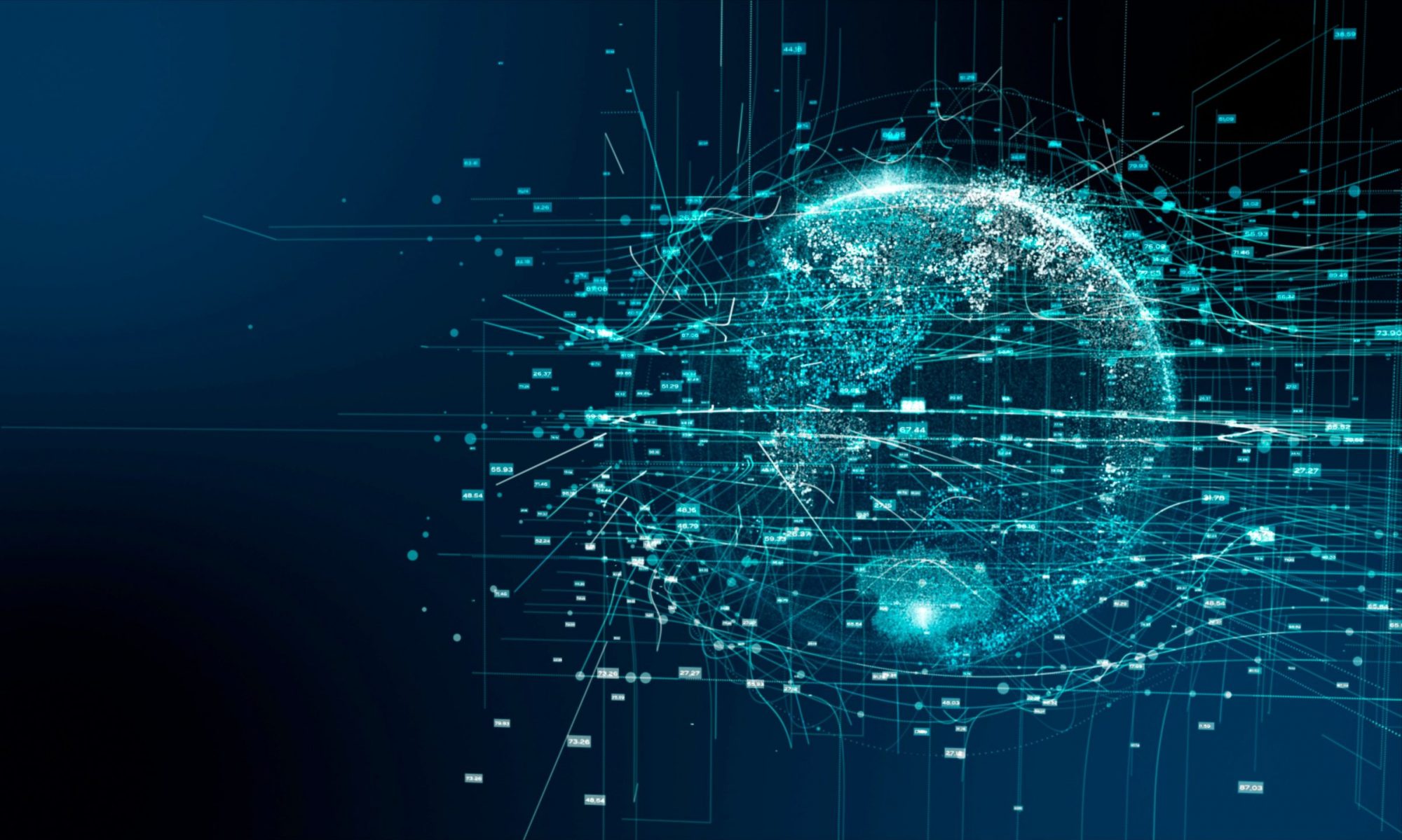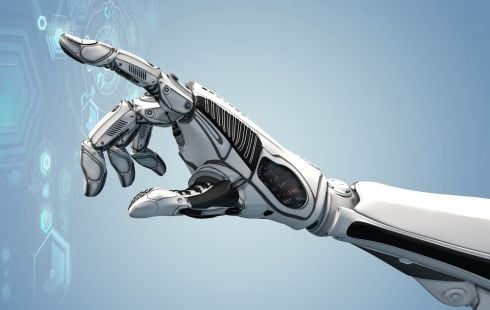Background
During this portion of the research, we took a step back to the basics and looked at the STEEP analysis, some key technologies affected by robotics and vice versa, what domains are affected, and the negative impacts of robotics.
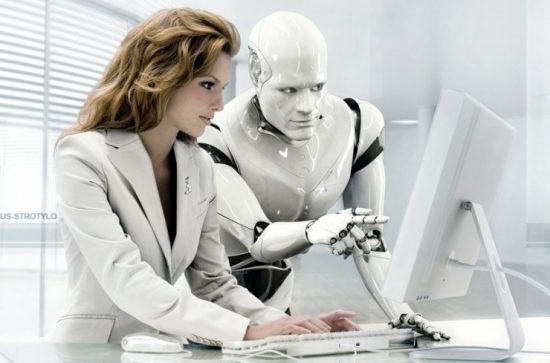
Our STEEP analysis started with social impacts. We thought and researched what will change in our social lives. Humans are going to learn how to communicate better with one another and with robots. New social robots are being used to work alongside humans at jobs and help make life more convenient. Although not everyone is fully comfortable with working alongside robots yet, putting them in workspaces is helping humans adjust to them being around. Next, technologically, in the future, we are going to see more advancements from big companies and companies who can afford to integrate robots to work. For example, in the past few months workers have not been showing up to work, so businesses are improvising. Companies such as Grubhub, Walgreens, Google, and Walmart are using robotics to deliver goods by robot or drone. Since technology is so heavily available, these big companies are able to integrate them into their business. Cyber security is also a big deal with these emerging new robots. Since robots can now be of access in the home, it has access to things you say, your home’s floor plan, and a camera that could be hacked. Some robots that are in the home, such as Amazon’s Astro, can recognize faces. If hacked police could access this facial recognition technology in your home. Moving forward, economically, we will see economic growth and a lower unemployment rate. In the future, robots will generate more jobs and help the productivity of workers. Ecologically, robots will be able to help remove pollution on the planet and help keep the air clean. Robotic machines have been developed to collect trash in the ocean and robotic drones have been developed to test air pollution in Greece in 2019. Lastly, politically, rules and regulations of robotics will have to change drastically. The development of agricultural robots is being slowed drastically from the lack of attention to old laws. In order for robotic technology to grow, governments will have to work with developers to create new laws.

Key technologies we looked at with robotics were autonomous systems and artificial intelligence. AI is used hand in hand with robotics because AI gives the robots the availability to have computer vision, motion control, grasping objects, and training data to understand physical and logistical data patterns. Autonomous systems make it possible to have autonomous robots. Autonomous robots are used in the supply chain to increase efficiency and productivity. Autonomous robots are able to work both by themselves and with humans to create maximum efficiency. They are programmed to perform certain tasks that help reduce inventory checks and optimize picking storing and storing times, as well as access difficult or dangerous locations. Over the past 10 years, robotics has found themselves in so many different domains such as the supply chain, farming, medicine, service drivers, telemarketers, and cashiers. As long as technology keeps advancing so will robots, and robots will continue to find their way into new domains. Although these are all of the positives, there will be many downsides to robotic integration and advancements. As of right now, robots are restricted to their programming, expensive to install and run, have many cyber security issues, and can malfunction. These negatives of robotics may not be this way forever. If and when new technology comes into play experts will revise and build new robots, one better than the one before, similar to any smartphone.
Individual Level
When understanding the implications of robotics at an individual level, there are four main trends that are being targeted, which are occupational, emotional, physical, and financial. Additionally, at an individual level, robots are surveilling and recording data from humans. These observations and reflections can be aggregated into big data and then used to develop algorithms for different machines and robots.

At an occupational level, many people have the wrong assumptions that robots are taking away jobs from the economy. However, that is an incorrect assumption. Robots are simply reducing the number of jobs that require low skills. With this, robots will create more jobs that require higher skills and thus result in higher income. Robots could push a future where high skills are required, which in turn would create a population that is more affluent and less below the poverty line. Additionally, robots have the potential to create products and services at lower costs, which means the cost of living over time has the potential to decrease. With the cost of living decreasing and the average income set to rise over the next few years, robots can set the scene for a prosperous economy. However, while this may seem like a benefit, it is important to acknowledge that many working-class citizens will not be able to achieve higher education and receive the skill sets necessary to thrive in this economy. This is where the concept of a robot tax comes into play. The robot tax is the idea that companies or industries that opt to replace employees with automated workers and robots should be required to pay a tax for this. This tax could equalize the costs of utilizing robots in place of paying a human worker to do the same job and could potentially save humans their jobs.
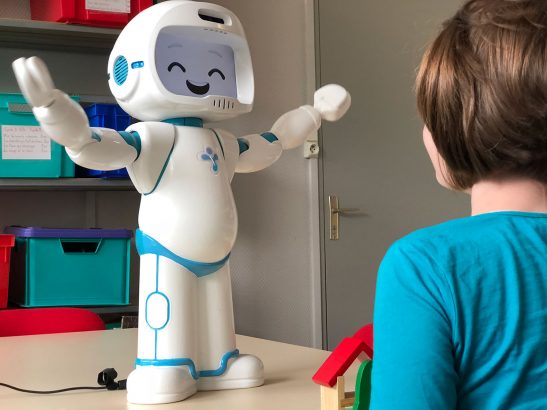
Another area affected at the individual level is the emotional aspect. This area is very closely linked to emotional AI and there will be a direct relationship between developments in both emotional AI and robots. In the future, therapy sessions and well-being checks can be administered by a robot with extreme emotional AI capabilities. However, currently, the emotional AI capabilities of robots are not sufficient to be able to react and respond in a human enough manner. Additionally, it is important to consider the uncanny valley that exists, which is where humans are uncomfortable with robots that look more human. Because of this, the design of robots suited to assist with the emotional needs of humans needs to be targeted towards what the consumer want.
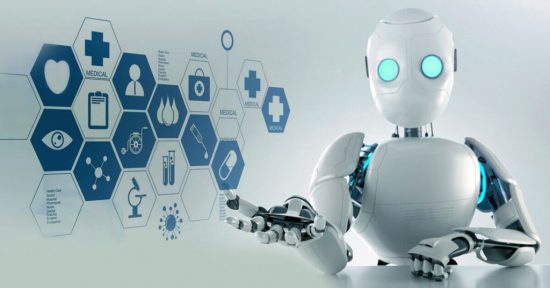
In the physical area, robots are helping to monitor and improve the health of individuals. A major area this has been seen lately is in sanitation robots that are preparing to help keep public areas clean in a post-COVID society. Additionally, robots are being employed throughout various healthcare facilities to monitor, sanitize, or provide care for individuals. Outside of the work functions of robotics, robotics is also being used in developing limps for amputees that are extremely responsive and real. Robot arms are now being made to look and feel more real with synthetic muscles. Additionally, in the future, robots can be developed to monitor health by performing routine scans of the body from the comfort of an individual’s own home. Much like IBM Watson, these scans could then go on to identify any potential illnesses and maybe even make a diagnosis.
Lastly, robotics will also serve to help the individual with the financial aspect of their life. This can be in many forms. In some areas, robots can serve as financial advisors since they will be able to analyze and sort data much faster than a human can. It can recommend stocks, concurrency, or any other types of investments based on its calculations. Additionally, some of which has already been implemented, robotics can aid individuals as advanced budgeting systems and can tell a human when they’re’ going over or under budget and even help to build budgets. Many people and businesses view robotics as a better way to handle finances, especially in the wake of a pandemic that has changed the spending habits of many.
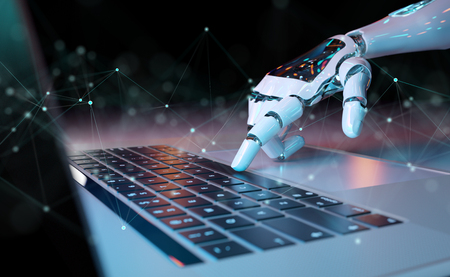
While there are so many ways robotics will serve to benefit the individual, it is important to consider that the individual is consenting to a lack of privacy and the ability to be hacked by allowing these robots into their lives. Additionally, many of these robots will be used to collect data and information from humans to build the next generation of robotics, a generation that is more informed and advanced. However, it is common that individuals must choose between technology and their privacy, and robotics where be just another occurrence of this dilemma.
Household Level
There are multiple types of robots that are being created for people to use around their homes. These robots serve a variety of purposes, such as cleaning, entertainment, and surveillance. These robots are demonstrating the trends of convenience, communication, face recognition, and leisure. Over the past decade, there have been several dramatic improvements in learning robot capabilities. OEMs are increasingly looking to adopt AI technologies, especially for vacuum cleaning, floor cleaning, and lawn mowing chores. The innovations in cleaning robots also show these trends of trying to make life more convenient as people are able to relax at home more. With the use of artificial intelligence in these newer models, they will be able to clean a person’s house all on their own. With new innovations coming in the future with the use of AI, people will have even more convenience in the future than they did with older generation robots.

Entertainment robots also show a sign of groundbreaking technology. One example of this is Anki’s Cosmo, which has a “personality” that is powered by deep AI, robotics, and gameplay content, which is constantly updated. The report claims that the robot is able to connect with the player and learn their skills. Cosmo has face recognition skills which is also a feature that is part of Amazon’s Astro. These robots feature AI, which will be able to identify people that they “know” just from their appearance, just like people do. With these abilities, robots are able to become more and more like humans.
As technology continues to advance, these robots will get newer models that improve upon their weaknesses. With these improvements, more and more people will feel incentivized to get them. However, even with these positives, there will still be consequences that follow suit. Some of the major concerns to come out of this would be privacy issues and the uncanny valley. In the current moment of time, people might think something like the Amazon Astro looks cute for how small it is. However, in the future when it gets newer models, it might be made to look closer to a human. It would be genuinely creepy to most people to see a robot that looks almost exactly like a real person walking around their home and performing everyday tasks.
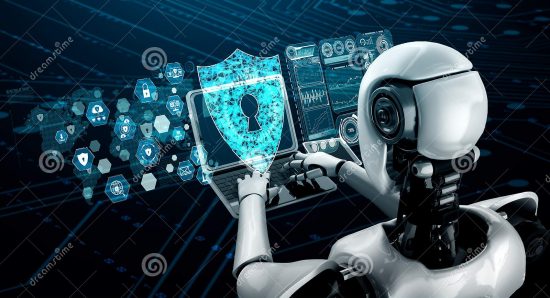
For privacy, a lot of the current models of robotics are able to record conversations and new products like the Amazon Astro are able to recognize and remember people’s faces. By purchasing all of these robots, people are trading their privacy for the sake of convenience overarching concern from many experts is that these technologies which collect and store data “just in case” are increasingly used to actively monitor people in real-time. People will be watched over and the point is not if they have anything to hide or not, but that they should be entitled to their privacy.
Household robots are associated with the following types of privacy and security risks that people must be aware of before wanting to purchase one of these products for their homes: risks related to the interconnection of the household robots with other devices, risks related to the data collection and disclosure abilities of household robots, risks related to the physical interactions of household robots, risks related to the infection of household robots with malware, and risks of psychological attacks conducted by household robots.
A large number of household robots can perform their functions only if they are connected to a home network. Thus, breaking into the home network by an unauthorized person may result in the hacking of the household robot. Household robots are equipped with a set of tools for collecting information, including 3D sensors, cameras, and microphones. The tools allow the robot to collect and save big amounts of sensitive personal data from the home it is operating at. In addition to privacy issues, household robots may also cause dangerous physical interactions. For instance, a hacked household robot may physically harm the inhabitants of the house. Robots may facilitate attacks when used in conjunction with other robots. They are susceptible to infections with malicious software. For example, counterfeited robots with embedded malicious code may be distributed on the market. Such robots may become a tool for committing data theft and identity spoofing. Since scientific investigations claim that humans can form emotional bonds with robots, such bonds may be exploited for potential psychological attacks. For example, remotely controlled home robots may be used to generate noise and sounds that may distress and confuse people.

There are ways for people to prepare for these risks in advance, however. One must do their research on these robots so they can know what they are getting themselves into. After purchasing the robot, the owner must change the passwords to be more complex to decrease the chance of the robot being hacked. Updating the software will also keep the device from being hacked as it can help fix any bugs that are present in the system. The owner will also need to disable internet access in order to avoid potential hacking attacks. However if a household robot requires an Internet connection, the owner should encrypt the home wireless network for protection. Before purchasing a sophisticated robotic machine and integrating it into the household, it is of utmost importance to assess its privacy features that would ensure safe and enjoyable use. The security awareness of the users of household robots can help them to choose the safest possible household robot and enjoy its operations.
It is important that there are ways around the current issues that household robots can possess. It will be beneficial for people to take action in order to protect their privacy as best as they can when technology advances and most people will wind up having robots roaming around their homes in the future.
Business Level
While the business sector has long been using robotics to make production more cost-efficient and effective, the future of robotics in business will expand far beyond automation robots. There are a few central trends where robots in business will be geared towards—these trends are lowering costs, decreasing contributions to climate change, creating efficiency, developing the harmony between humans and the use of robotics, and implementing quality checking standards. Additionally, contrary to popular belief, robots aren’t eliminating jobs. In fact, they’re actually increasing them. According to the World Economic Forum, automation will add approximately 58 million jobs. Of this amount, two-thirds will become higher-skilled jobs and the remaining third will be lower-skilled. This means that the future of work requires a highly skilled workforce; however, it is important to note that higher skills don’t equate to an increase in traditional education. As robotics become more mainstream, there is the chance that education to operate and/or maintain these robots will not require a college/university-based education.
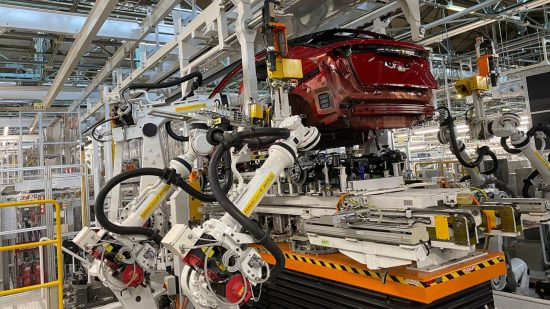
A recent example of next-level automation at a factory level is the Nissan Intelligent Factory located in Tochigi, Japan. The factory was launched at the beginning of October 2021 to create a greener production process and to help confront Japan’s labor shortages due to its aging population. The plant fully builds the vehicle and includes extremely detailed quality checks to ensure all parts of the vehicle are being installed in the best location tailored to each vehicle. Additionally, the plant is Nissan’s first step for a carbon-neutral future for the company. The plant has condensed separately processed to be completed simultaneously in single steps, which ultimately decreases the amount of electricity used. While the climate change aspects are a huge benefit, it is important to consider the risks. Any glitch in the software or even a potential cybersecurity hack could result in faulty cars being put out on the roads. This could cause serious accidents for consumers and could have huge costs to Nissan.

Another domain being hugely affected by the next wave of robotics is agriculture. Currently, America is extremely codependent on other countries to produce the products necessary to feed our country. However, with the help of robotic technology, American can position itself to grow plans anywhere with not much human capital. An example of this is Iron Ox, which is a California startup that utilized robots and greenhouse to grow crops. A self-driving robot moves produce where it needs to go while a sensory robot will lift plants out of the water to inspect the roots and measure levels of nitrogen and acidity. Additionally, Iron Ox utilizes 90 percent less water and 90 percent less electricity than traditional farms within their controlled environment. Additionally, the company aims to create a more equitable future by being able to provide affordable products for all. Iron ox believes technology is the key to creating cheaper produce. However, with technology and robots, there is always the chance that this equipment can be overridden. This provides a future where harmful produce, if not properly quality checked, could be distributed to innocent consumers.
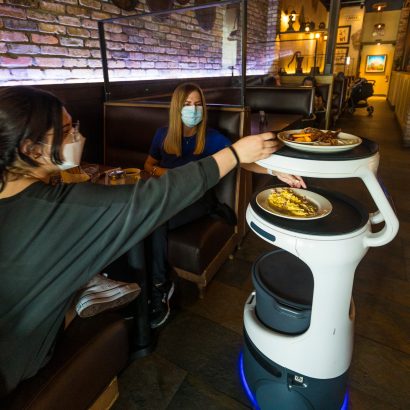
Lastly, another area that will be completely upended is client-facing industries. Robots have the power to become more efficient, affordable, and valuable than humans. For example, Sergio’s Restaurants (a chain in Florida) recently replaced some of their weight staff with robots. The robots the restaurant employed simply deliver food from the kitchen to the tables. These robots are even capable of learning customers’ names. With advancements in emotional intelligence, these robots might even be able to hold polite conversations with customers in the future. While many would think these robots would take away from humans, it has enhanced the value of humans. Sergio’s service has improved by 20 to 35 percent and the wait staff has been able to create more quality relationships with their customers, which has led to larger tips. This is one example of how robots can support the work humans are doing in domains that are client-facing. Additionally, it is important to consider the effects of the uncanny valley when thinking about robots’ immersion into client-facing roles. With this, it is important to consider that some humans like their robots to look like robots and this should be factored into how humans and robots will work together. Another item to consider is the reliance on sensors in movement robots. If a sensor fails or glitches, it could cause huge issues.
Ultimately, we know the next wave of robotics will continue to disrupt almost all industries in business. However, it is important to consider the implications this robotics can have if the proper cyber security and autonomous technology are not implemented. Additionally, companies need to research and understand the uncanny valley that exists between humans and robots so that the robots they manufacture are of value to humans.
Global Level
When looking at the implications of robots on the future of the world, it is important to consider the positive and negative effects, along with the practical concepts of how robots will be integrated into society as a whole. Globally, there has been a great impact that affects areas surrounding war, policing, climate change, and the supply chain. One of the most important things to consider is how these will be influenced in the future and, in turn, change the way people operate in their daily lives, in their households, and in various corporations.
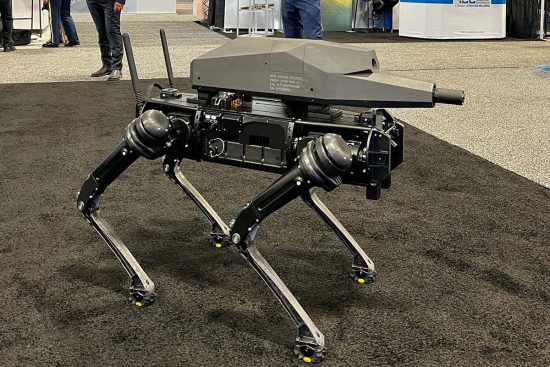
Through war, individuals view this as an action resulting from human-on-human combat, but many do not consider the possibility of robotics being completely implemented into this field. The growing increase in drone strikes gives way to the possibility of robot dogs being used in difficult terrain. Robot dogs started by the Pennsylvania-based brand Ghost Robotics in 2015 have continuously gone through testing in order to attempt to perfect these robotic devices; the question is, is this truly achievable? Is there any way to make this device reliable? Reliability is clearly an issue that will be facing the future of these robot dogs in the next few years, as the backlash on these machines has been immense, showing the difficulty countries might face in actually putting these into practice. The societal shift for using these concepts will prove difficult, especially as the push to equip these mechanical devices with sniper rifles. Doubling with the ability of human error of individuals controlling robotic dogs along with the progressive push in the last few years to ban assault rifles in many countries, humans will find it difficult to trust robotics strapped with weapons. Another negative drawback could include how easily infiltrated these robots could become if actually used in the war in the future. Would they be easily hacked? How would the military stop these attacks from happening? Two positive results from the utilization of robot dogs and sniper robots are the increase in job opportunities in robotics in the military, as the United States Navy is already implementing a robotics team, in addition to the future saving of human lives. This disruptive technology could take the place of humans completing sniper missions, which eventually will lead to the potential saving of military lives.

As modern-day policing has become a controversial issue in countries like the United States because of issues relating to police brutality, the future structure of policing has also become controversial because of concerns surrounding surveillance capitalism. Surveillance capitalism falls under the umbrella of privacy concerns, as the new reign in technology has many fearing that they could never have their personal information actually kept personal. In Singapore, the police have set out trial patrol robots that influence individuals to maintain the rules and structure of their Singapore society, but humans are beginning to wonder if these autonomous robots are truly trying to help them engage from bad behaviors or spying on their everyday moves. While this part of the world is pushing towards a “smart nation”, activists say this is not fully the case. The police, who rely on these devices for convenience purposes, continuously state these patrol robotic machines are used to prevent social distancing guidelines, mask-wearing, and even smoking in undesignated areas, executing the fact that the robots do not record the actual individuals being given a warning; we learn this is not necessarily the case. Authorities are currently shifting the argument to fairness, as they are encouraged to report on the truth; but, their definition of fairness does not take into consideration privacy concerns. As so many citizens are fighting against these robots being used in society, those in power are doing the exact opposite. The future predicts these autonomous policing robots are not going away, as their technology towards policing is shown to strengthen in the next decade. By 2030, the country is set to double the 90,000 already set police cameras and improve their facial recognition, allowing the authorities to pick out humans in crowds. In the next few years, we are going to begin to see laws shift to encompass how “fair” these technologies are being used to spy ad track citizens. These robots are not just going to be a concern of the population of Singapore, but soon to the rest of the world as robotics begins to pave the way in other societies.
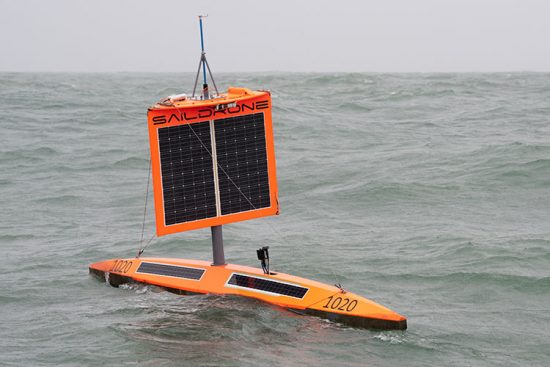
Climate change is a topic you cannot ignore as its effects are consistently revealing themselves to us in one way or another. As we constantly face the problems resulting from the human impact of climate change, the fight to slow it down is underway. Governments across the globe and their citizens are pushing to protect the future of the planet by attempting to further greener initiatives whether they be completely feasible or not, in order to get individuals thinking about the greater impact. In the Arctic, NASA’s Saildrone USVs which are autonomous sailboats, are being operated from computers hundreds of miles away in order to monitor the influence on the ice in the Arctic. The findings from the studies being conducted will allow researchers to view the temperature of the surface of the sea and how it is directly shifting over the years. As this is underway, smaller island countries like Fiji, the Maldives, and the Solomon Islands continue to voice their options to the United Nations on how their countries are being affected by climate change. In the next year or two, we are going to see more laws being put in place forcing individuals to change their daily habits in order to prevent massive floods and other signaling acts caused by climate change from being as prevalent in society. The societal impact has already begun in states in the United States where plastic straws and bags are banned along with the mission to make a majority of cars electric. The question remains how this will translate to the entirety of the world as originations like the United Nations are faced with these issues. The political involvement will certainly be strong, as progressives already see the potential climate change possesses.
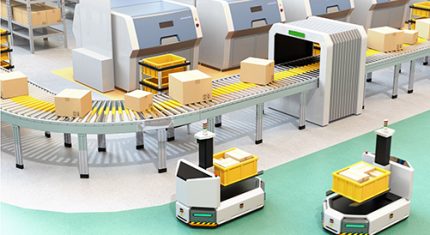
While the world is facing one of the largest supply chain-driven issues due to the recent Covid-19 pandemic, corporations are forced to think of new ways for individuals to get products all over the globe. As technologies are further in many fields, robotics is being implemented to respond to the lack of humans working in resource departments and warehouses. By 2025, two of the top 10 global retailers are planning to launch robot resource departments in order to manage nonhuman workers to satisfy orders and mitigate labor shortages. These robots will partner will various AI-driven picking systems to take inventory on products, so humans can focus on other tasks and continuously keep them engaged with the company. Because of the labor shortages, humans and corporations are going to be forced to rely on robotic devices, which will be more of a positive outcome than first perceived. While the societal adjustment might be difficult at first, the economic impact that the robots bring to these corporations all over the world will be great, as companies will soon begin to notice that human workers can benefit in other fields and not need to be paid to do certain tasks that robots can perform. This change is already being brought to light by companies like Amazon. Companies claim that the robotics with these AI-driven influences have begun to increase operating efficiency throughout their corporation by 300-400% and to increase storage density by 230% while obtaining high-efficiency operations.
